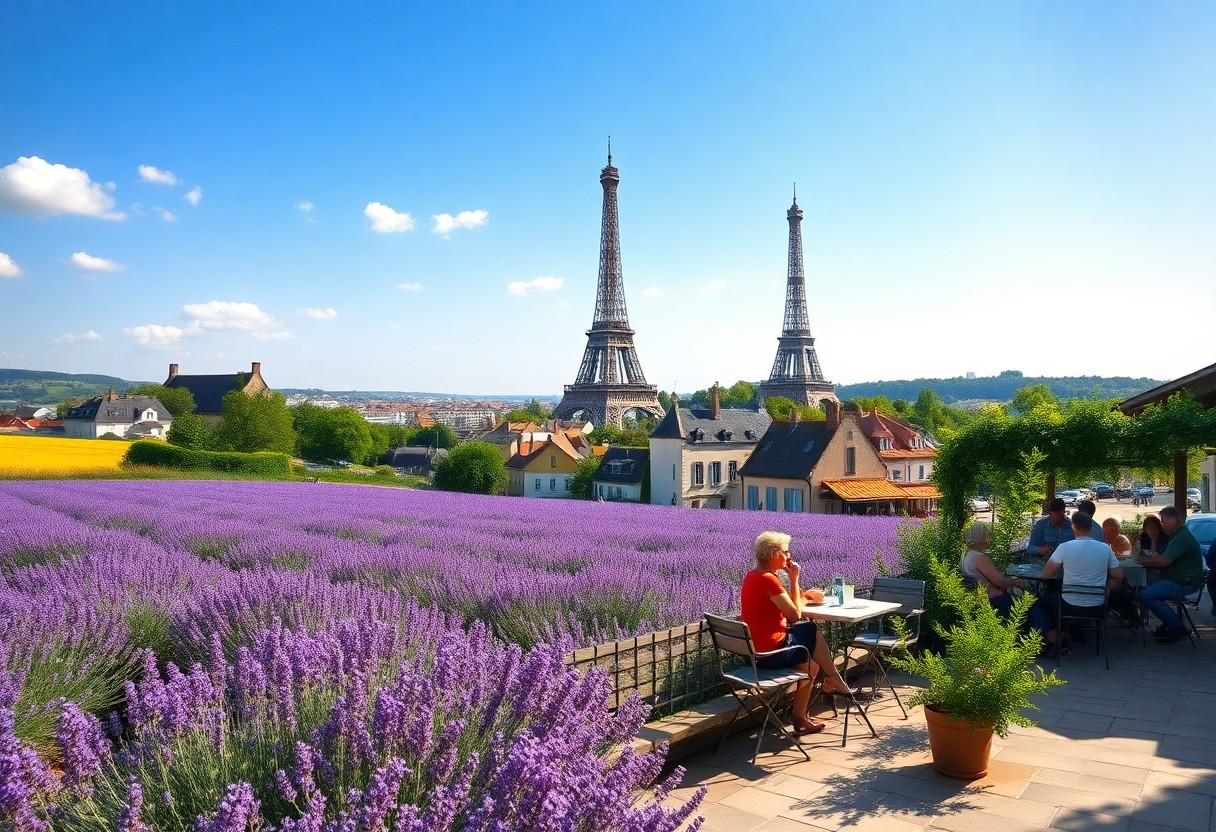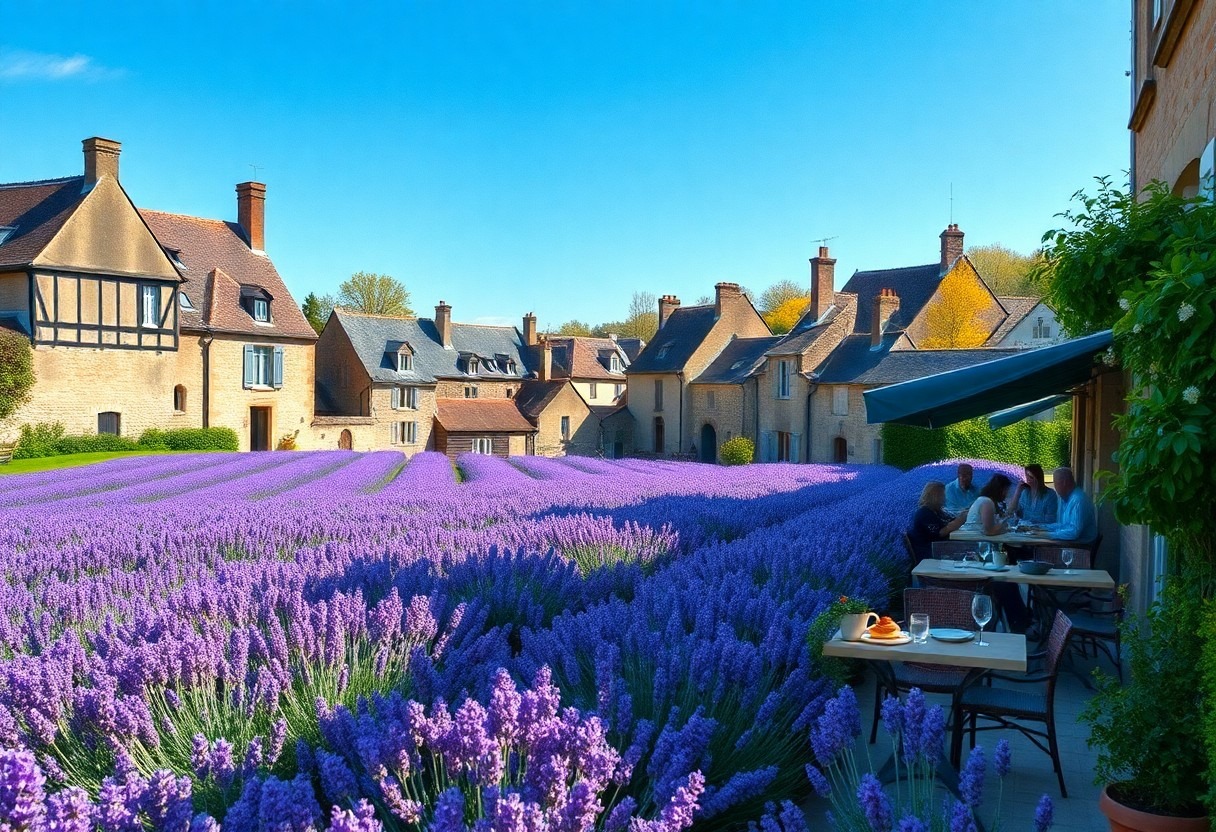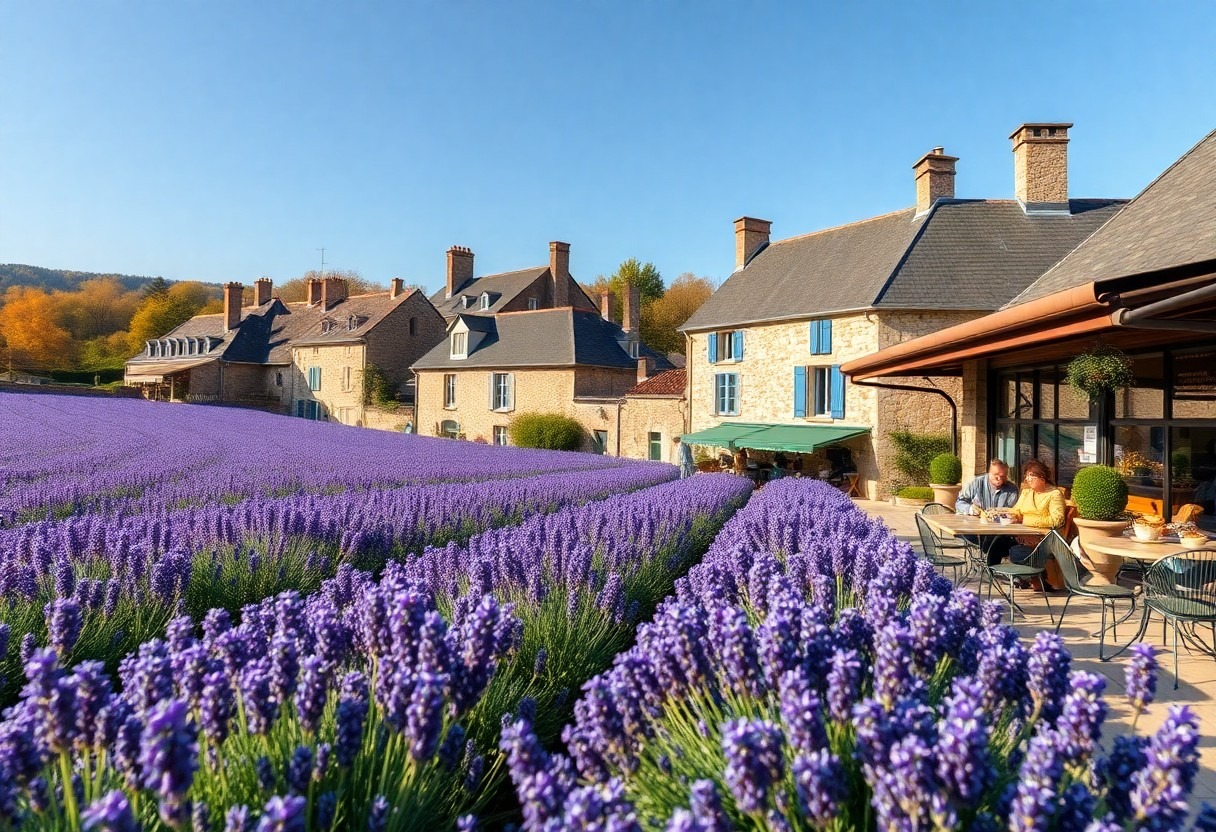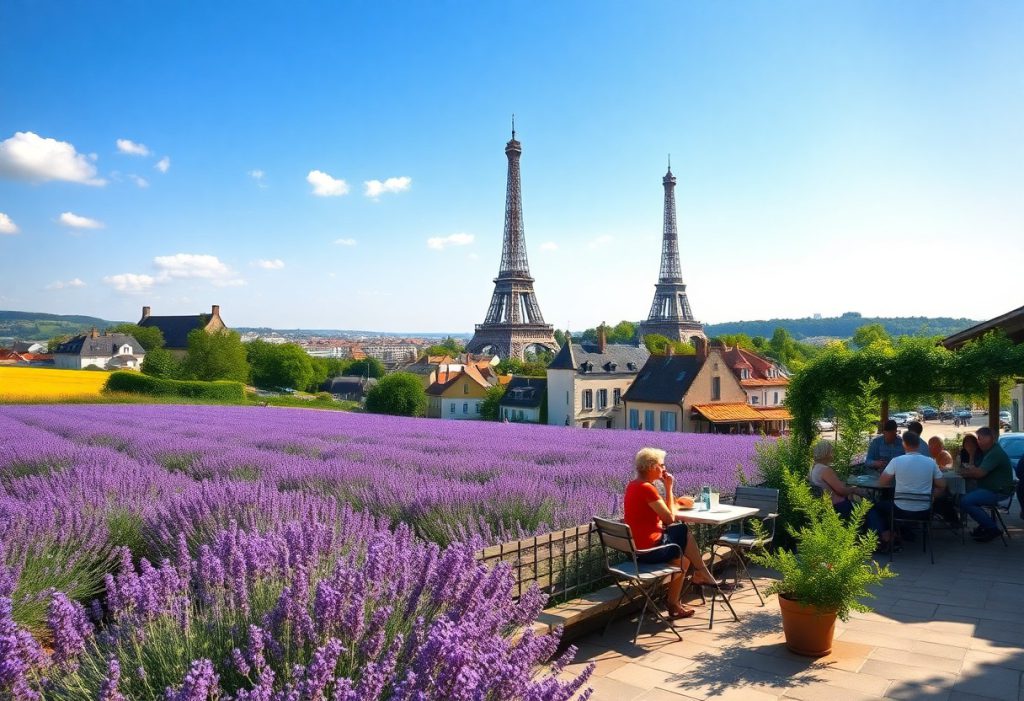This comprehensive guide will empower you to plan your ideal French vacation year-round. Discover the best times to visit France tailored to your unique preferences and travel style. France offers distinct experiences across its seasons, from enjoyable spring temperatures perfect for exploration to sunny summer days ideal for seaside relaxation. The country’s varied weather patterns between the northern and southern regions can significantly influence your travel experience. It's essential to note that summer attracts the highest number of tourists and premium pricing, while winter presents lower costs but requires warm clothing and careful weather considerations.
Unlock Optimal Travel Experiences by Exploring France’s Seasonal Weather Patterns
To effectively plan your unforgettable French adventure, it's essential to recognize that France has four unique seasons, each with temperature variations that can greatly affect your trip. The southern Mediterranean regions enjoy warmer temperatures year-round, making them particularly attractive for visitors seeking milder climates. In contrast, the northern and central areas experience more pronounced seasonal shifts, offering unique opportunities for various activities throughout the year. When visiting the coasts, you'll benefit from the Gulf Stream’s warming influence, which keeps winters relatively mild along the Atlantic coastline, enhancing your overall travel experience.
Experience the Joy of Pleasant Spring Weather and Conditions
Choosing to visit France during the spring months (March to May) offers delightful temperatures ranging between 10-20°C (50-68°F). Your days will feature a mix of occasional rain showers and increasing sunshine, creating a welcoming atmosphere for exploration. The southern regions warm up more quickly, making them ideal for travelers eager to enjoy early season adventures. As flowers bloom and outdoor cafes begin to open, spring provides a vibrant backdrop, perfect for sightseeing and immersing yourself in local culture. Engaging with local festivals during this time can further enrich your experience, showcasing the beauty of France in full bloom.
Discover the Invigorating Warmth of Summer Weather Across France
The summer months (June to August) usher in warm temperatures throughout France, averaging around 25°C (77°F) in most regions. If you're planning coastal visits, you'll benefit from refreshing sea breezes that provide relief from the heat, while inland areas can see temperatures exceeding 30°C (86°F). For instance, summer in Paris can reach sweltering highs of 35°C (95°F), making early morning or evening sightseeing much more enjoyable. In the south, regions like Provence may experience the fierce Mistral winds, yet the Atlantic coast typically offers more moderate temperatures, ideal for a variety of outdoor activities. Engaging with summer festivals and outdoor dining can further enhance your experience.
Throughout the summer, be ready for the lively atmosphere of festivals and events across the country. This season is perfect for enjoying outdoor dining, beach activities, and exploring picturesque towns. Just remember to stay hydrated and wear sunscreen as you explore France's diverse landscapes, ensuring that you soak up every moment of your summer adventure.
Understand Autumn Temperature Trends and Their Impact on Your Travel Plans
| Northern France | 10-18°C (50-64°F) |
| Southern France | 15-23°C (59-73°F) |
| Early Autumn | Mild, dry conditions |
| Late Autumn | Increasing rainfall |
As autumn unfolds, France showcases a beautiful transformation with cooler temperatures and vibrant foliage. Early autumn offers mild, dry conditions that are perfect for outdoor activities like hiking and exploring vineyards. However, as the season progresses into late autumn, expect increasing rainfall, particularly in the northern regions. This seasonal shift presents an excellent opportunity to enjoy wine harvest festivals and explore the stunning landscapes painted in rich autumn colors, making it a picturesque time for photography and cultural immersion.
Winter Weather Overview: Anticipating Conditions During Your Visit
The winter months (December to February) bring a variety of weather conditions across France. If you're visiting northern regions, you'll encounter typical temperatures ranging from 3-8°C (37-46°F). Meanwhile, the Mediterranean coast maintains milder temperatures, hovering around 10-15°C (50-59°F), making it an attractive winter getaway. However, your winter travel plans should account for snowfall in mountainous areas, especially in the Alps and Pyrenees, where temperatures can drop below 0°C (32°F). The Atlantic coast may experience frequent rain, while the Mediterranean region often enjoys more sunny days, even in winter, allowing for enjoyable strolls along the coast.
Winter travel in France offers unique charms, from festive holiday markets to thrilling winter sports opportunities. The holiday season transforms cities into magical destinations with twinkling lights and seasonal festivities, creating an enchanting atmosphere that is not to be missed. Visiting historical sites adorned with holiday decorations can provide a captivating experience full of warmth and cheer.

Discover the Best Times to Visit France According to Your Travel Preferences and Interests
Each season in France presents distinctive experiences, making it essential to align your ideal travel timing with your personal interests. The peak season (June-August) brings warm weather and a plethora of festivals but tends to come with higher costs. Alternatively, the shoulder seasons (April-May, September-October) offer enjoyable weather and fewer crowds, making them excellent choices for exploring the beauty and culture of France. Winter (November-March) provides the most budget-friendly rates but requires careful planning to accommodate the cooler weather and potential closures of attractions.
Enhance Your Cultural Tourism and Sightseeing Experience in France
For an enriching cultural experience, planning your visits during the shoulder seasons is highly recommended. During these times, you can explore renowned museums and historical sites without the overwhelming crowds that characterize peak tourist months. With comfortable temperatures ranging between 15-20°C (59-68°F), the conditions are ideal for leisurely city walks and visits to outdoor monuments. Additionally, major museums often experience shorter queues during these periods, allowing you to enjoy the exhibits more thoroughly and at a relaxed pace, which enhances your appreciation of French art and history.
Embrace Outdoor Activities and Adventures in France
Outdoor adventures in France reach their peak during the late spring to early fall (May-September). This is the perfect time to enjoy hiking in the majestic Alps, cycling through the picturesque Loire Valley, or kayaking in the stunning Ardèche region, all while benefiting from optimal weather conditions that facilitate various outdoor pursuits. With summer temperatures averaging around 25°C (77°F), it’s ideal for engaging in a range of outdoor activities. The French Alps, in particular, offer a variety of pursuits suited to each season, from hiking in summer to skiing in winter. Spring and fall are fantastic for mountain biking and rock climbing, with temperatures typically ranging from 10-20°C (50-68°F), providing ideal conditions for adventure.
Delight in Food and Wine Tourism Experiences Across France
The ultimate food and wine experiences await you during the harvest season (September-October). This time of year allows you to participate in local wine harvests, savor fresh regional products, and enjoy a variety of food festivals celebrating the culinary richness of France. Many wine regions host special tasting events during this period, providing you with opportunities to indulge in the rich flavors of French cuisine, which is renowned worldwide. To enhance your culinary journey, consider planning your visit around specific regional harvests. For instance, Champagne tours are exceptional in August-October, while the excitement of truffle hunting peaks in winter, making each region's specialties align perfectly with its unique seasonal calendar.
Plan Your Beach and Coastal Visits for Maximum Enjoyment in France
If you're dreaming of a beach vacation, schedule your visit between June and September, when the Mediterranean waters are at their warmest (20-24°C/68-75°F). The French Riviera boasts over 300 days of sunshine annually, making it a prime destination for sun-seekers looking to relax by the sea. However, keep in mind that summer also brings peak crowds and higher prices, so early planning is advisable. During this time, you’ll find a wide array of food and entertainment options along the coast, enhancing your beach experience. If you prefer a more relaxed beach getaway, consider visiting in May or September when the weather remains pleasant, but the crowds are significantly smaller, allowing you to enjoy the serenity of coastal towns that maintain their charm year-round.
Essential Seasonal Travel Considerations for a Memorable French Trip
Unlike many destinations, France provides unique experiences throughout each season. Each time of year brings distinct advantages for your travel plans. For instance, spring showcases blooming gardens, summer bursts with vibrant festivals, autumn highlights wine harvests, and winter transforms cities into enchanting holiday destinations, each offering something special for every traveler, allowing for a rich and varied exploration of French culture and landscapes.
Understanding Peak vs. Off-Peak Seasons for Better Planning
One of the most crucial factors in planning your visit should be timing your trip around peak seasons. July and August mark the highest influx of tourists, leading to crowded attractions and inflated prices, while the period from November through March sees significantly fewer visitors, providing a more intimate experience of France. Your decision between peak and off-peak travel will impact everything from accommodation availability to waiting times at attractions, making it essential to consider your priorities when planning your itinerary.
Crowd Levels and Their Impact on Your Tourism Experience in France
A notable characteristic of French tourism is the variation in crowd density throughout the year. Paris attracts approximately 30 million visitors annually, with summer months leading to the heaviest foot traffic at major attractions. This influx of tourists can significantly affect your experience at popular sites, leading to longer wait times and less personal space. For example, you might encounter 45-minute queues at the Eiffel Tower during peak season, compared to more manageable 15-minute waits during off-peak months. Early morning visits (before 9 AM) are typically the best way to enjoy major attractions, regardless of the season, providing a more relaxed experience.
Understanding Price Variations Throughout the Year for Budget-Friendly Travel
To maximize your travel budget, it's essential to understand that prices fluctuate significantly across seasons. Hotel rates can be as much as 40% lower during winter months, with the exception of the holiday season in December and special events. Seasonal pricing impacts more than just accommodation; flight costs often peak during the summer months and school holidays. Therefore, shoulder seasons (April-May and September-October) frequently offer the best value, providing a balance of reasonable prices and favorable weather conditions, allowing you to experience France without breaking the bank.
Exploring Regional Weather Differences for a Tailored Experience in France
There is considerable variation in weather patterns across France’s diverse regions. While Mediterranean areas enjoy milder winters, northern regions tend to experience more pronounced seasonal changes, which can greatly impact your travel experience. For example, summer temperatures can reach 30°C (86°F) in Provence, while Paris remains cooler, averaging around 25°C (77°F). In contrast, alpine regions maintain snow coverage from December through April, making them perfect for winter sports enthusiasts seeking adventure. Understanding these regional differences allows for more tailored planning, maximizing your enjoyment during your visit.

Discover Budget-Friendly Travel Periods for Your French Adventure
For travelers seeking value, France offers significant cost savings during specific times of the year. The off-peak season from November to March presents the most budget-friendly options, with hotel rates often up to 40% lower than those during peak season. Additionally, you’ll discover reduced prices on flights, accommodations, and attractions, although some tourist sites may operate with limited hours during this period, making it a great time to explore France’s rich history without the usual crowds.
Embrace the Advantages of Low Season Travel in France
One of the primary benefits of visiting France during the winter months is the substantial cost reduction. You can explore Paris’s major museums without the usual crowds, find hotel deals starting at €80 per night, and immerse yourself in authentic local life. Winter also presents unique experiences like Christmas markets and thrilling winter sports opportunities in the Alps, making it an enchanting time for exploration and allowing for a deeper understanding of French traditions.
Take Advantage of Shoulder Season Opportunities for a Balanced Experience
The transitional periods between peak and off-peak seasons (April-May and September-October) offer an excellent combination of affordable prices and pleasant weather. During these times, you can enjoy comfortable temperatures, fewer tourists, and rates that are typically 20-30% lower than summer prices. Understanding the nuances of shoulder season travel can help you maximize your budget and enjoyment, making it an ideal time to visit popular attractions without the typical crowds.
During these shoulder seasons, you’ll often find flight prices averaging 25% less than peak summer costs, while attractions remain fully operational, and weather conditions are still perfect for sightseeing adventures, allowing for a comprehensive exploration of French culture and landscapes.
Implement Cost-Saving Strategies for Your Travel Plans in France
As you plan your French adventure, consider booking accommodations in advance, utilizing public transportation passes, and dining at local markets. These strategies can help you reduce daily expenses by up to 50% compared to peak season rates. Travel smart by opting for options like the France Rail Pass for transportation and visiting attractions during off-peak hours. Additionally, aim to book your accommodations at least 3-4 months in advance for the best rates, and consider staying in neighborhoods outside tourist centers, where prices can be 30-40% lower, allowing you to enjoy a more authentic experience.

Essential Travel Tips Tailored to Each Season in France
Your seasonal visits to France will require different preparations to ensure a smooth and enjoyable experience.
- Spring: Pack rain gear and light layers for fluctuating temperatures, ensuring comfort during unexpected weather changes.
- Summer: Secure accommodations early and prepare for larger crowds, enabling a more comfortable and enjoyable stay.
- Fall: Bring warm clothing and check dates for harvest festivals, maximizing your cultural experience during this vibrant season.
- Winter: Pack heavy coats and verify attraction opening hours to avoid disappointment, ensuring access to key sites during your visit.
Understanding each season’s unique characteristics will help you plan effectively and make the most of your time in France, allowing for a fulfilling and memorable experience.
Smart Packing Guidelines for Your French Adventure
Travel intelligently by adapting your luggage to France’s seasonal weather patterns. Comfortable walking shoes, versatile layers, and rain protection are essential year-round. Your packing list should also include a universal adapter for your electronic devices and a basic French phrases book to enhance your communication during your travels, creating a more immersive experience as you interact with locals.
Transportation Recommendations for Seamless Navigation in France
Your journey through France will benefit immensely from using the efficient rail system. You can choose between high-speed TGV trains for major cities and regional trains for local exploration. Your rail pass options range from single journey tickets to multi-day passes, providing flexibility for your travels and allowing you to explore at your own pace.
Moreover, combining train travel with local metro systems in major cities maximizes your mobility and efficiency. The RATP app is a valuable resource for navigating Paris's public transport, while regional buses connect you to smaller towns and picturesque villages, enhancing your travel experience with easy access to hidden gems.
Accommodation Advice for a Comfortable Stay in France
Accommodation costs can vary dramatically depending on location and season. Your best options may include boutique hotels in city centers or gîtes (holiday homes) in rural areas, offering a taste of local culture. To secure the best deals, aim to book 3-4 months ahead for peak season visits, allowing you to enjoy better rates and availability.
When choosing your accommodation, consider transportation links to guide your decision. Ensure your hotel is conveniently located near public transport or has parking available if you’re driving. Staying in smaller towns near major cities can reduce costs while still providing good accessibility to attractions, allowing for a more relaxed and enjoyable travel experience.
Key Planning Factors for an Unforgettable French Trip
Your trip's success hinges on careful planning, including considerations for travel dates, budget constraints, and seasonal activities. Striking a balance between peak tourist seasons and off-peak advantages is crucial, as is your comfort with varying weather conditions. Ideally, you should allocate at least two weeks to explore the major destinations in France properly, allowing ample time to immerse yourself in each region's unique offerings.
Festival and Event Schedules to Enhance Your Experience in France
To fully immerse yourself in French culture, plan around major events like Bastille Day (July 14), the Cannes Film Festival (May), or the Tour de France (July). These events can significantly influence accommodation prices and availability in certain regions, so it’s important to book early if you wish to participate and enjoy the vibrant atmosphere they create.
Understanding Opening Hours and Accessibility of Attractions in France
Many French attractions follow specific seasonal schedules that you should consider when planning your visit. For example, museums are often closed on Tuesdays, while smaller shops frequently close on Sundays. Your visit timing can affect access to key sites, and being aware of these hours is essential for effective trip planning. Additionally, many restaurants may close between lunch and dinner (usually 2:30 PM to 7:00 PM), and popular attractions might have extended hours during summer months but reduced schedules in winter, impacting your itinerary.
Regional Travel Considerations for a Tailored Experience in France
For the optimal travel experience, each French region has its peak season that you should align with. For instance, Provence is stunning in July for lavender, while the Alps are perfect for winter sports from December to March. Your choice of destination should reflect these seasonal highlights to maximize your enjoyment and experience, allowing you to fully appreciate the beauty and diversity of France.
Understanding the weather patterns of each region is also crucial for effective packing. The Mediterranean coast enjoys mild winters but can be extremely hot in summer, while northern France tends to experience more rainfall throughout the year. The Atlantic coast often faces strong winds in autumn, and mountainous regions exhibit significant temperature variations between day and night, making it important to pack accordingly.
Final Thoughts on Planning Your Perfect French Getaway
In summary, you can effectively plan your visit to France based on your personal needs and preferred weather conditions. Spring offers mild temperatures and stunning blooms, while summer provides long, sunny days ideal for sightseeing and outdoor activities. Fall is highlighted by harvest festivals and fewer tourists, whereas winter presents the lowest prices and unique seasonal experiences. Your best time to visit will depend on your budget and desired activities: opt for spring or fall for balanced weather and moderate crowds, choose summer for maximum activities despite higher costs, or select winter for the best deals. By packing appropriately for your chosen season, you'll be able to fully enjoy the beauty of France, no matter the weather.
Frequently Asked Questions About Traveling to France
Q: What are the best months to visit France for pleasant weather and fewer crowds?
A: The ideal months to visit France are April-May (spring) and September-October (fall). During these periods, temperatures typically range from 15°C to 20°C (59°F to 68°F), creating perfect conditions for sightseeing and outdoor activities. You'll also encounter smaller crowds at major attractions, allowing you to enjoy outdoor cafes and gardens in a comfortable atmosphere. Additionally, hotel prices are generally lower than during the peak summer season, making it a cost-effective choice.
Q: How does summer weather affect tourism in France?
A: Summer (June-August) brings warm temperatures ranging from 17°C to 25°C (63°F to 77°F) and long sunny days, marking the peak tourist season with the largest crowds and highest prices. Paris and the South of France can become hot and humid, reaching up to 35°C (95°F). During this time, popular attractions often have long wait times, and many locals escape the cities for vacation in August, leading to closures of some smaller shops and restaurants, impacting the overall experience.
Q: What should visitors expect during winter in France?
A: Winter (December-February) is the coldest season, with temperatures typically ranging from 3°C to 7°C (37°F to 45°F). Rain is common in Paris and northern regions, while southern France remains milder.
Comments are closed



Your insights on planning a French vacation based on seasonal weather are spot on! I’ve found that traveling to France in the shoulder seasons, particularly late spring or early fall, often offers the best balance of pleasant weather and fewer crowds. For instance, experiencing the lavender fields in Provence during late June is a breathtaking sight, but I also enjoyed exploring the charming streets of Paris in September when the summer tourists have returned home.
You’re hitting the nail on the head with the shoulder seasons; it’s like discovering a secret menu at your favorite restaurant. Late spring and early fall truly strike a chord with travelers looking to savor everything France has to offer without the commotion of peak tourist season. And I couldn’t agree more about those lavender fields in Provence—it’s like Mother Nature decided to start a side gig as an impressionist painter.
Your guide captures the essence of seasonal travel in France beautifully, and I appreciate the nuanced insight into how weather can influence our experiences. The contrast between peak summer tourism and the allure of quieter winter landscapes is particularly intriguing. Personally, I’ve always found that visiting France in the shoulder seasons offers a delightful blend of pleasant weather and fewer crowds. For instance, exploring the lavender fields in Provence during late June not only provides stunning visuals but also a more intimate engagement with the local culture, compared to the bustling summer months.
I appreciate your thoughts on seasonal travel in France; it truly is a rich topic. There’s something special about the shoulder seasons that really can enhance the travel experience, isn’t there? Late June in Provence sounds idyllic—those lavender fields are a sensory feast, and I can imagine how captivating it must be to interact with local artisans and farmers during that time.
It’s fascinating how shoulder seasons bring out the nuances of a destination, isn’t it? Late June in Provence is a particularly lovely time, both for the visual splendor and the lively interactions with those who call the region home. The lavender fields don’t just look stunning; they provide a backdrop for conversations with farmers who are often eager to share their stories and the nuances of their craft.
Your insights into the seasonal variations in France are truly thought-provoking. As someone who has visited France in both spring and autumn, I can attest to the distinct charm that each season brings. Spring, with its blooming gardens and mild temperatures, creates a picturesque backdrop for exploring cities like Paris or the lavender fields of Provence. I remember strolling along the Seine, where the cherry blossoms were in full bloom, adding an almost magical quality to the experience.
I appreciate how this guide highlights the importance of seasonal variations in planning a trip to France. Each season offers such distinct experiences that it’s hard to imagine visiting without considering them. For instance, I’ve found that late spring, around May, can often strike a perfect balance—beautiful blooming gardens in places like Giverny, warm but not overpoweringly hot weather, and fewer tourists compared to the peak summer months.
You’re spot on about late spring in France. Giverny really comes alive then, with those gardens bursting at the seams in color. It’s like nature is showing off a bit before the summer crowds roll in. Plus, the vibe is just different—more relaxed. If you have a chance to explore places like the lavender fields in Provence or the vineyards in Bordeaux during the early summer, it’s equally stunning but definitely brings a different kind of energy. Do you have any other favorite spots in France for that sweet spot between seasons?